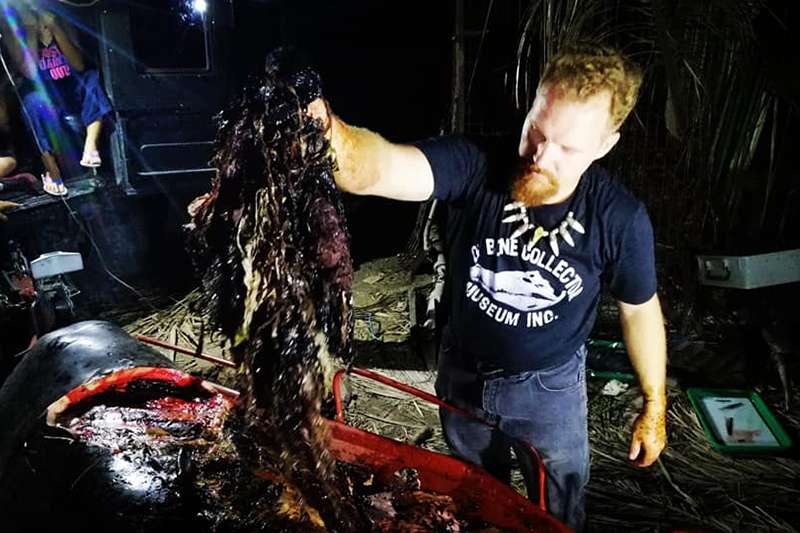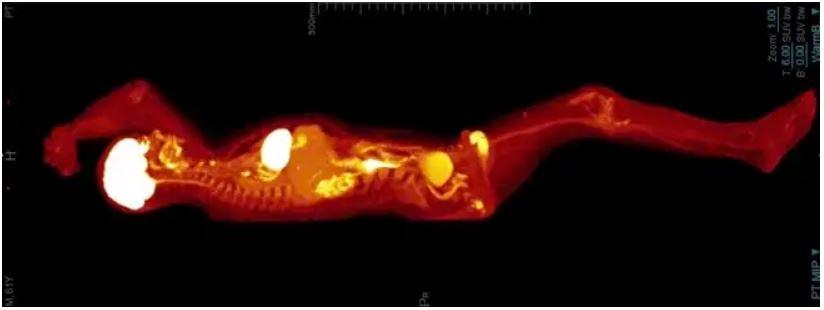ICYMI: Science and technology updates from March 17 to 24, 2019.
Dead whale found in the Philippines with 40kg of plastic in its stomach

From New Scientist:
Marine experts in the Philippines say a dead whale found with 40kg of rice sacks and other plastic bags was the worst case they have ever encountered of an animal killed by plastic.
The Cuvier’s Beaked Whale (Ziphius cavirostris) was found on the shores of Sitio Asinan in the Philippines on Saturday morning, and an overnight examination Saturday confirmed it had died of starvation and dehydration due to plastic. Plastic in and of itself is not yet thought to harm the animals, but it can compact their stomach and stop food from getting to their intestines, preventing them from digesting food, from which whales also get freshwater. In this case, the amount of plastic was so bad that the whale’s stomach was starting to digest itself.
The Philippines ranks as the second worst country in the world, behind China, for the amount of plastic waste it discharges into the oceans.
Pinoy senior high students develop internet-based fire alarm system
From GMA News Online:
Check out Project FLAME, an internet-based app fire alarm system that will notify your phone if a fire breaks out in your home developed by senior high school students from Mapua University.
FLAME, which stands for “Fire Luminosity and Multisensory Equipment” is a device that utilizes heat signature mapping and a multi-sensor system to detect fire and notify the homeowner.
The Department of Science and Technology-Philippine Council for Industry, Energy and Emerging Technology Research and Development (DOST-PCIEERD) granted financial aide of one million pesos under the Young Innovators Program’s (YIP’s) fund to achieve their primary goal of reducing casualties and damaged properties caused by fire through providing a faster and reliable information to authorities.
Pinoys create new, “painless” way of blood sugar monitoring
A painless way of checking one’s blood sugar topped the Philippine demo leg of Hackdays Philippines 2019 on Wednesday. The device, called the gluCOmeter, was created by diabetes patient Reinier Veral and his Nokia officemates Erwin Ong, Marek Ganko, and James Sarmiento.
gluCOmeter’s non-invasive blood sugar measurement works with a person’s breath. It will compete in Singapore on April 10 for the final leg of the hackathon.
Experts say tuberculosis can be eradicated by 2045
From Rappler:
The world can eradicate tuberculosis by 2045 if the fight against the killer disease is properly funded, an international team of experts said Wednesday, March 20.
Warning of the immense economic and social costs of inaction, they said that better screening, treatments and public awareness were needed to reduce the more than 10 million cases recorded every year.
New tech allows doctors to “see everything inside you at once”

From Popular Science:
A mashup between traditional positron emission tomography (PET) and x-ray computed tomography (CT), the EXPLORER images the whole volume of the body simultaneously, building up a detailed three-dimensional model in less than a minute. Your doctor can then look at cross sections of just your knee or heart, for example, or has the option of zooming out to see all your organs squashed into one image—the “maximum intensity projection”.
The device represents the world’s first full-body 3D scanner, according to its creators, and can generate movies as well as static models. What’s more, an EXPLORER scan exposes the patient to a fortieth the radiation of a traditional PET scan, and although that figure will vary depending on the settings, less radiation is always a good thing.
Unlaid egg found in ancient bird fossil for the first time

From Science:
For the first time, researchers have found an unlaid egg inside a fossilized bird. The find—belonging to a sparrow-size flyer that lived in northwestern China 110 million years ago—is especially remarkable because fully formed eggs typically only stay within an adult bird for about 24 hours. Researchers were initially puzzled by the discovery, as they never suspected the unusual, squashed mass within the headless fossil’s abdomen (seen as a flattened brown layer in the center of the picture) could be an egg. But a microscopic analysis of a fragment revealed it to be eggshell.
NASA: A huge meteor exploded over Earth in December (whew!)
From Yahoo News UK:
A large meteor exploded over Earth, Nasa has revealed.
It said the massive fireball was the second largest blast of its kind for 30 years, and yet it went mostly undetected.
The meteor exploded with ten times the energy of the Hiroshima atomic bomb.
It blew up over the Bering Sea, off Russia’s Kamchatka Peninsula, in December, Nasa said.
The asteroid came through the Earth’s atmosphere at a speed of 32km/s on December 18, on a steep trajectory of seven degrees[.]
Some colour views of the #meteor that flew over the North Pacific in December 2018, taken by Japan’s #Himawari satellite.
The meteor is really clear here – bright orange fireball against the blue + white background!Background: https://t.co/r403SQxicZ pic.twitter.com/ctNN8zxsXb
— Simon Proud (@simon_sat) March 18, 2019







